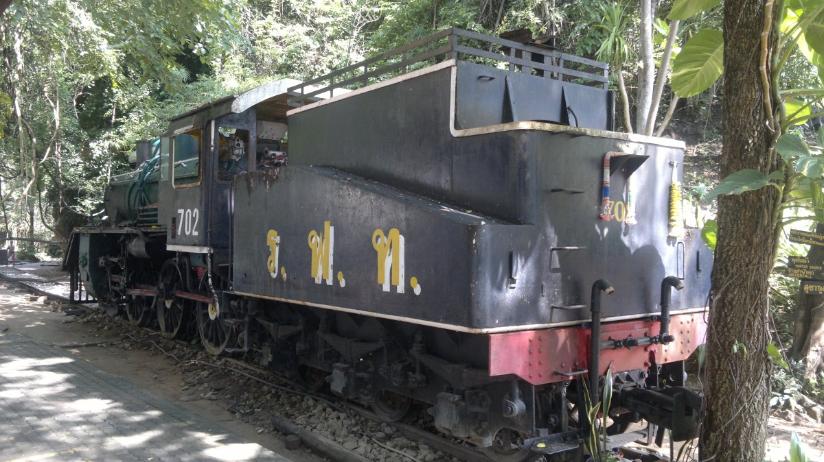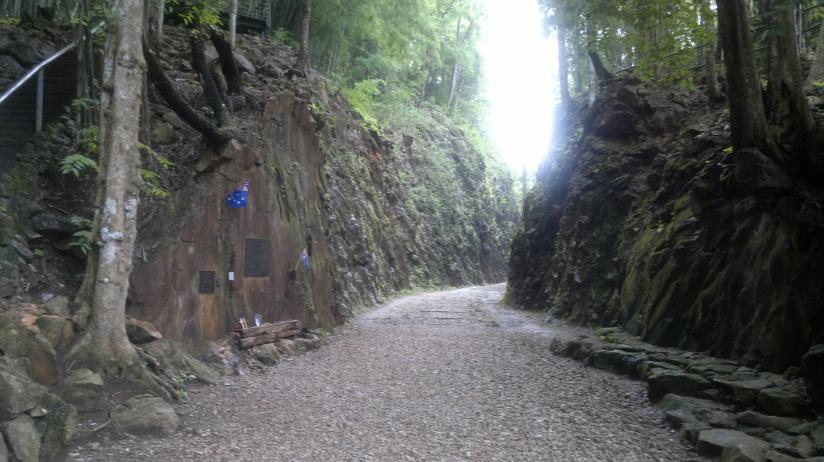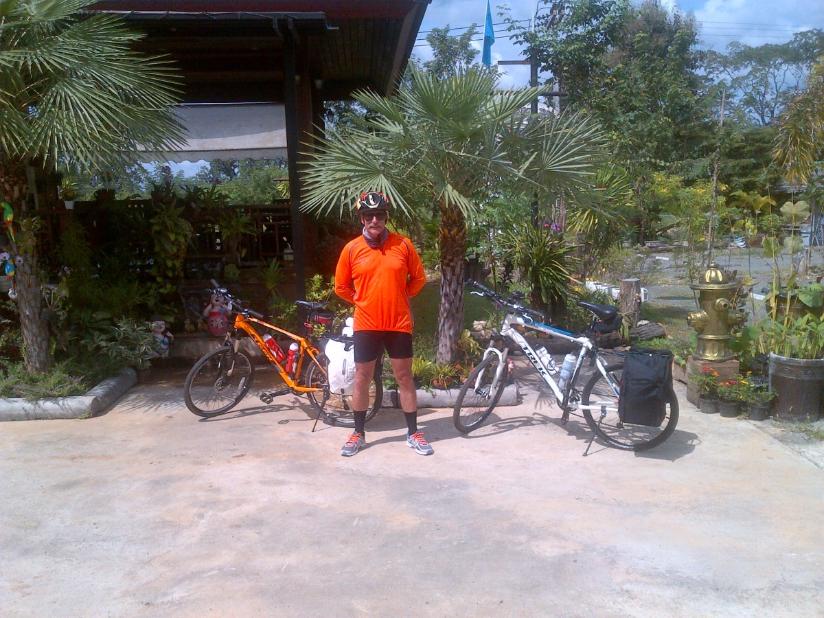3 November 2014
- A3PPABT3: Kanchanaburi - Sai Yok Bicycle Track
- General data:
- We started our bike trip at the Royal River Kwai Resort in Kanchanaburi and ended the third bicycling day at the Sai Yok Yai Coffee in Sai Yok.
- Technical data of the trip was as follows: Total Distance: 87 Km; Moving Average: 21.8 Km/Hr; Overall Average: 14.7 Km/Hr; Maximum Speed: 51.4 Km/Hr; Moving time: 3 Hr 59 Min; Stopped Time: 1 Hr 55 Min; Total Time: 5 Hr 54 Min.
- Number of participants: 2 (Pat & Steve)
Breakfast was at 0700 Hr, but we went to the hall 15 minutes earlier. We had decided to start this track a bit later as usual and to take breakfast at the resort. We thought not to see Sean as he planned to leave early that morning, but he was still at the reception waiting his transport. Steve was not in a very good mood as the hotel staff at the breakfast was rather impolite and housekeeping tried to put an opened can of Coke on his account. We had to wait another 10 minutes before we passed the check-out, but finally we could leave at 0730 Hr. The weather was cloudy and very misty with high humidity.

After 21 Km we made a first rest stop at a pump station as Steve wanted to blow up the tires. It took us there about 10 minutes and then we continued to the Sai Yok Noi Waterfall. We made a photographic stop at the spot where the Death Railway crosses the road to Thong Pha Phum in between the Nam Tok and Wang Yai Railway Stations.

Near the Sai Yok Noi Waterfall we halted at a 7-Eleven to buy some drinks and then visited the fall. The Death Railway track passed directly in front of the waterfall, which is located west of Nam Tok Station. In the same area a rock cutting and a Japanese JNR C56 locomotive (2-6-0 class Mogul) bearing the number 702 (Thai SRT identification)) can be seen; a type of small sized locomotive used by the Japanese military on the Death Railway. The first C56 was manufactured at the Hitachi Co in 1934. A total of 160 engines has been made of which 90 done in narrow gauge were sent to Burma (43) and Thailand (47) end of 1941. Nearly all Thailand's C56 survived the war and were in service by the State Railway of Thailand until the 70's.

We left around 1100 Hr in direction of the Hell Fire Pass, where we arrived half an hour later. A memorial had been built in dedication to those Australian and other Allied prisoners of War and Asian labourers who suffered and died at Hell Fire Pass and elsewhere in the Asia Pacific region during the Second World War. We visited the Memorial and went down to the Konyu cutting. The Konyu cutting is an example of the type of excavations of the 415 Km Thailand-Burma railway constructed in 1942-1943 by American, Australian, British and Dutch Prisoners of War and conscripted nationals from Burma, Malaysia and Thailand. The Hell Fire Pass and the adjacent cuttings were excavated by POW labour working in round-the-clock shifts over a desperate period of 12 weeks in 1943 called "speedo". The name Hell Fire Pass relates to the awesome scene presented at night by the light from torches and lamps in the cutting. This work was done without the aid of reliable mechanical equipment.

From the Hell Fire Pass Memorial we continued to our destination of the day. We arrived at Sai Yok Yai Coffee at 1315 Hr. There was not much to see in the immediatevicinity of the hotel. We mainly spent our time in eating at the sole restaurant opposite our accommodation, drinking a coffee while using the Wi-Fi, and take a rest.
